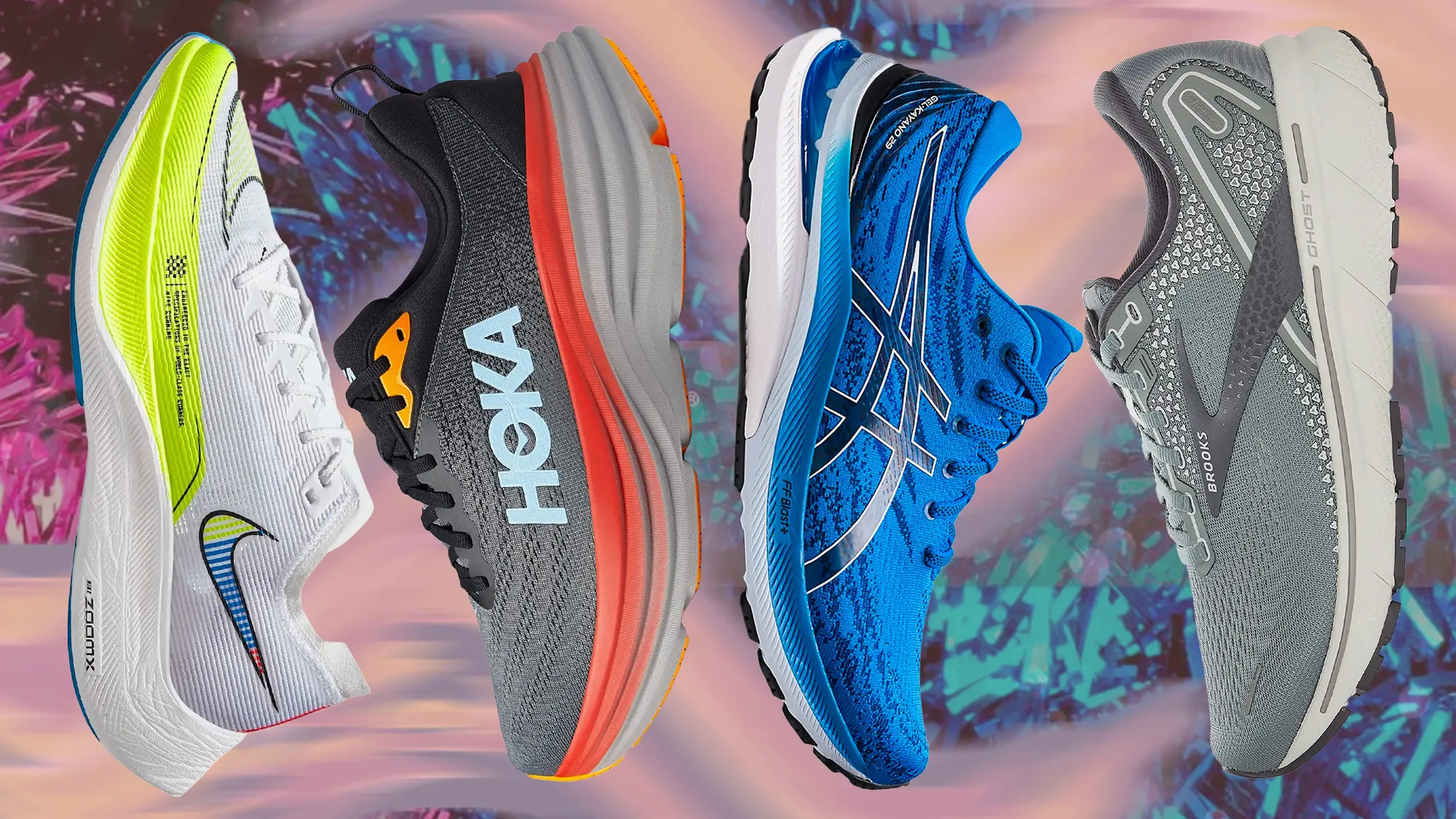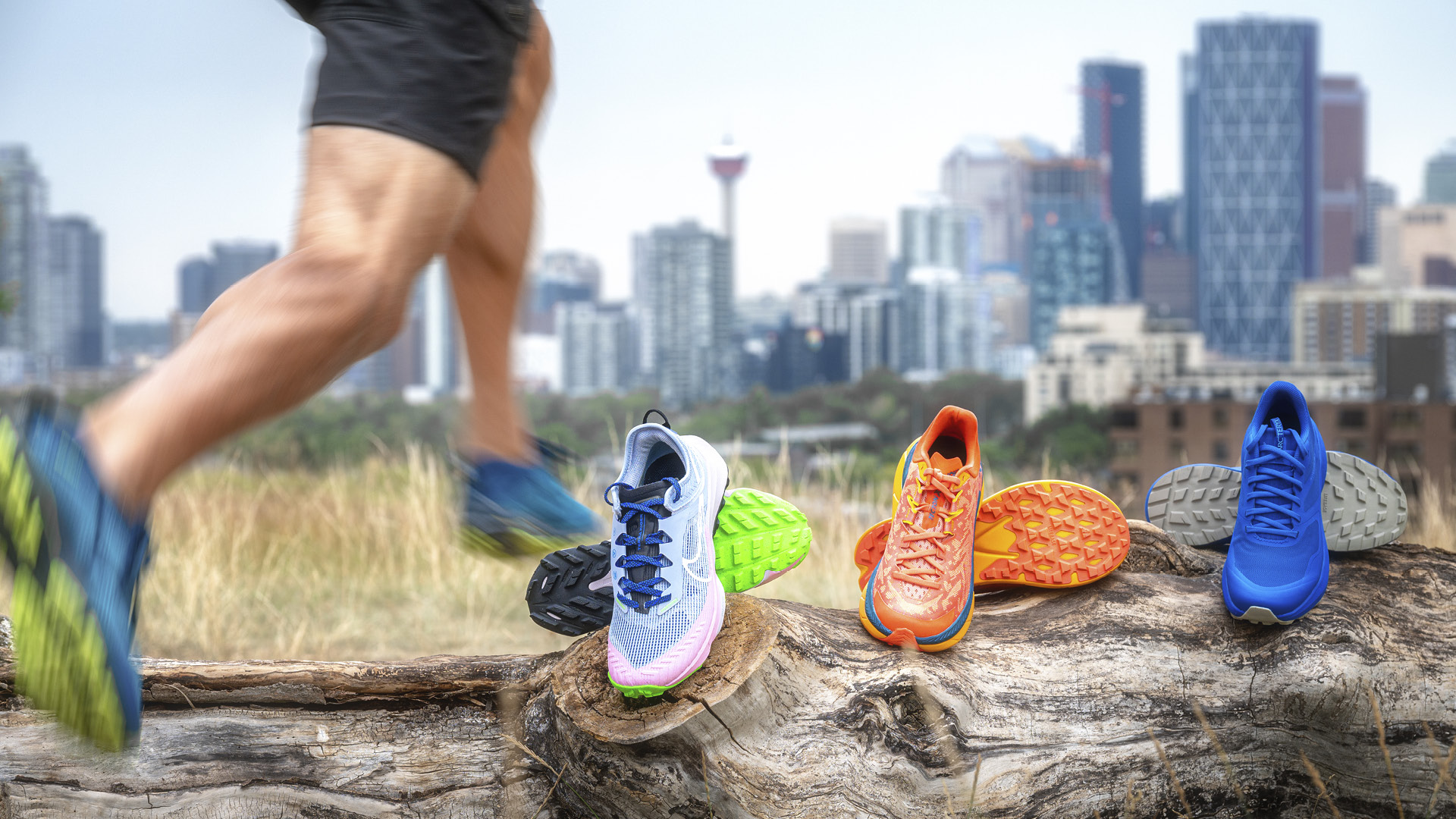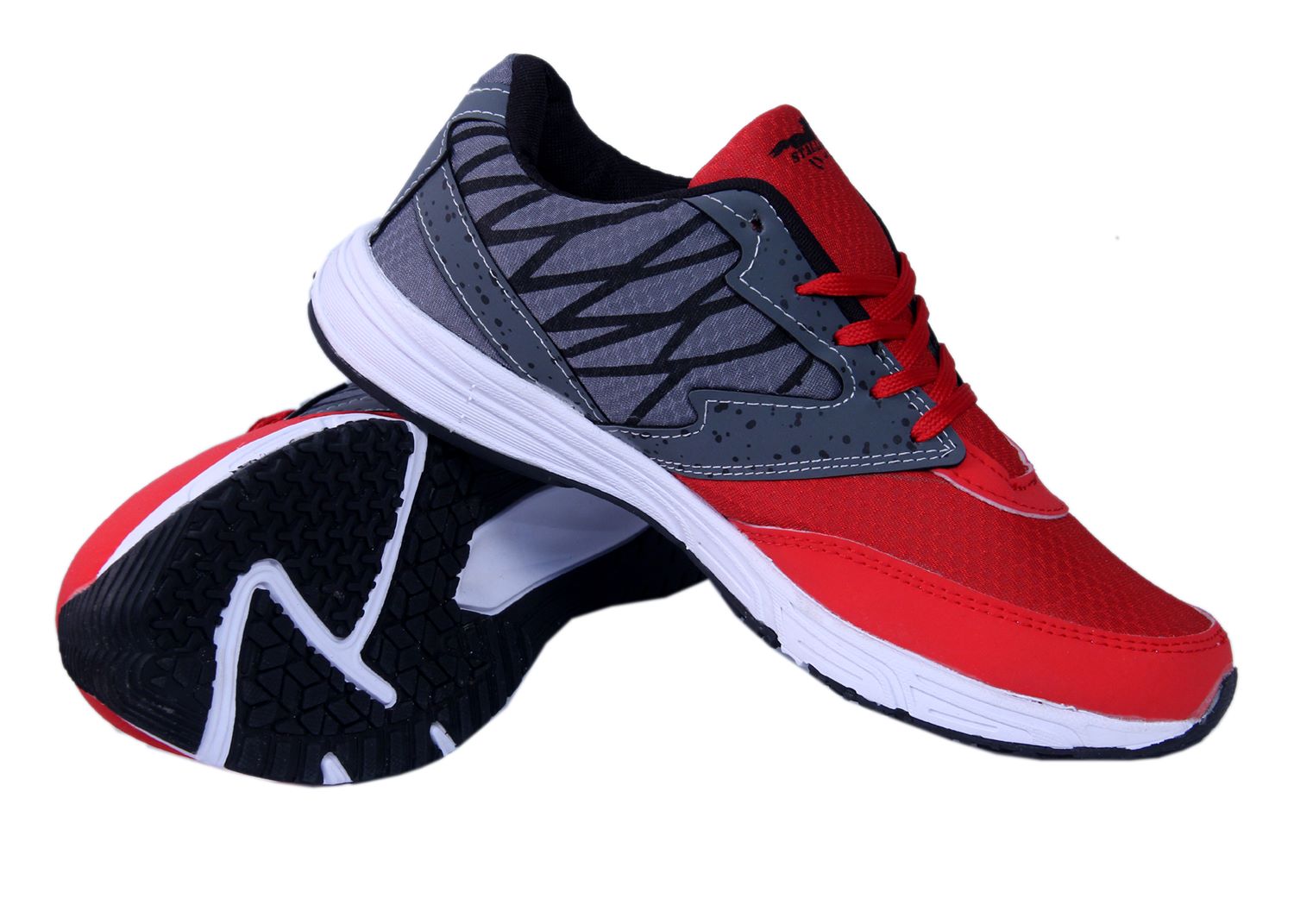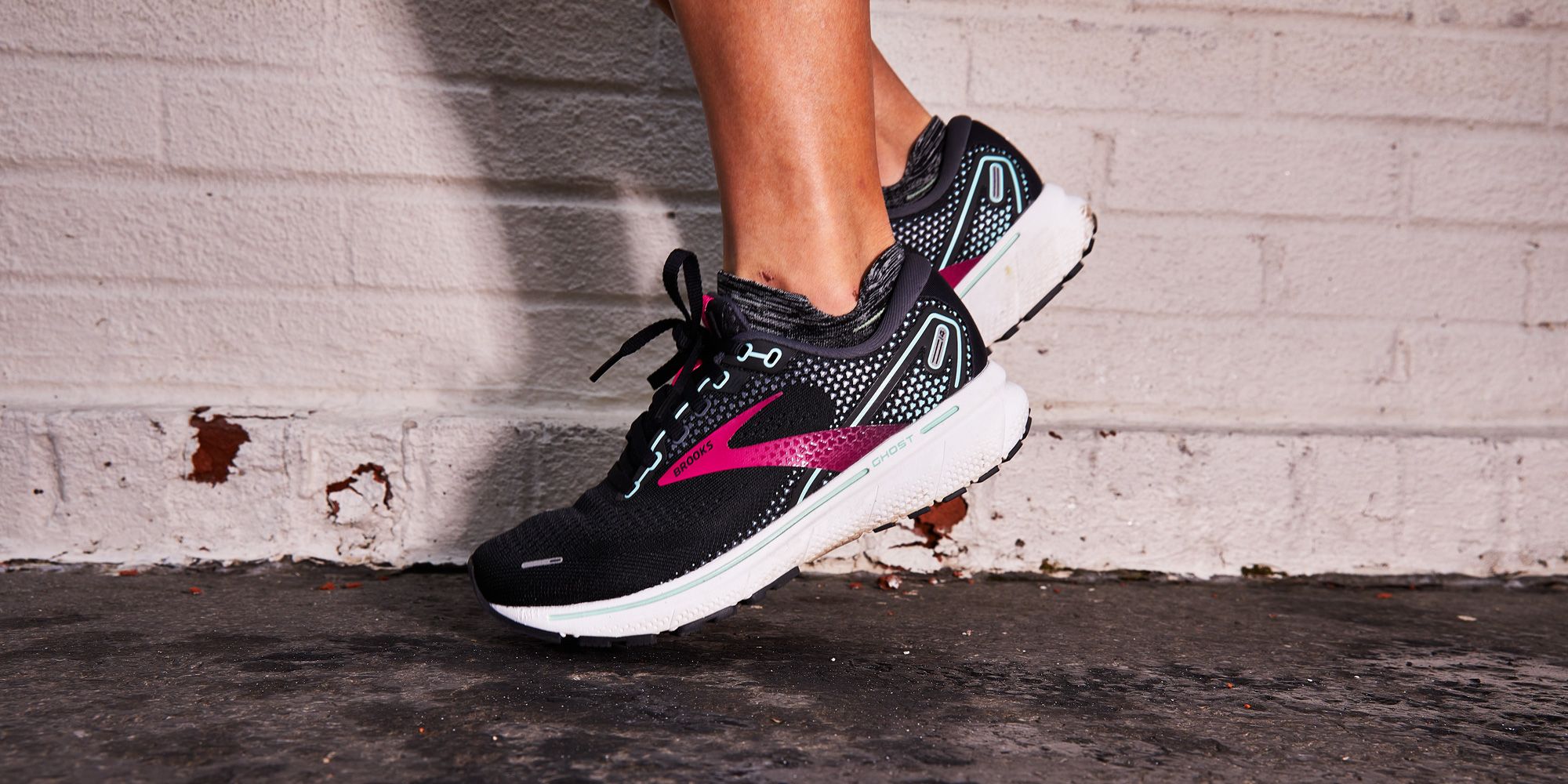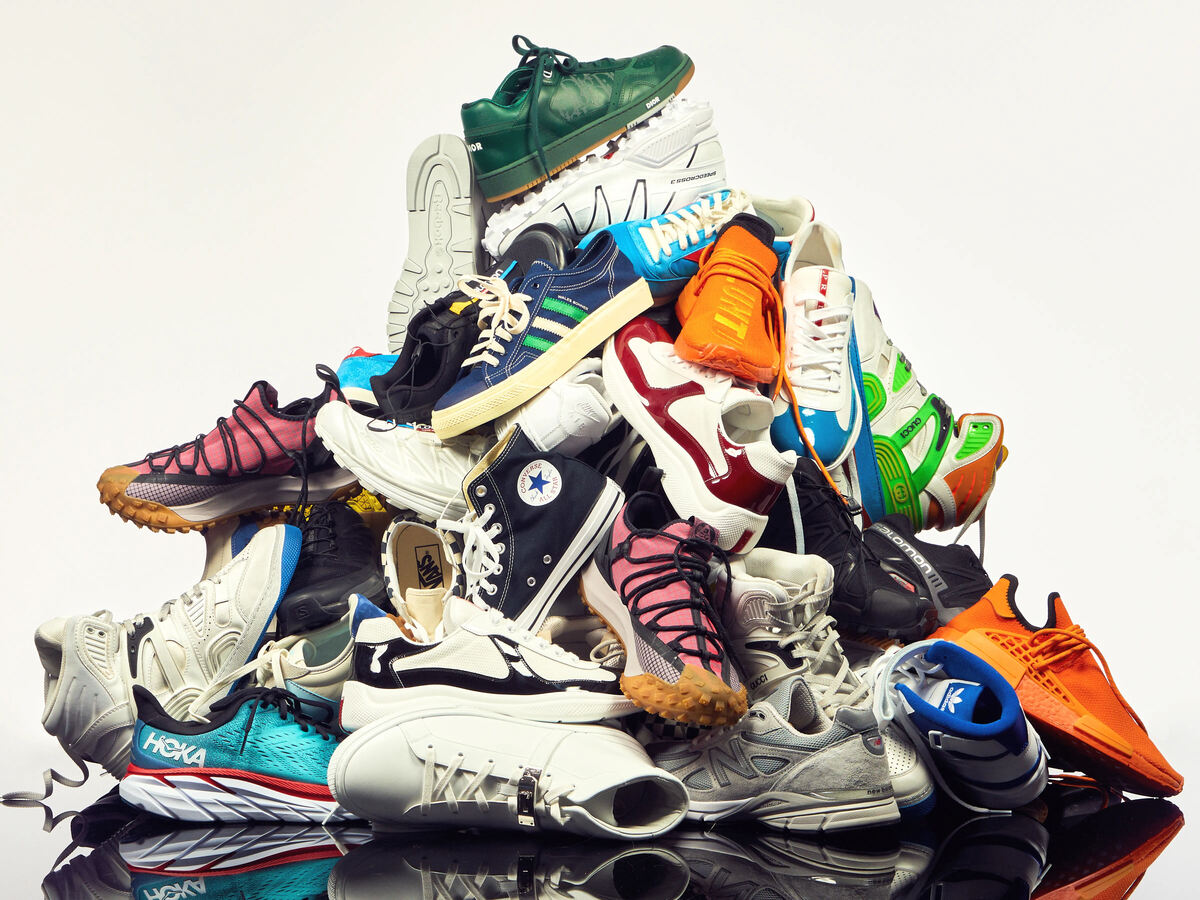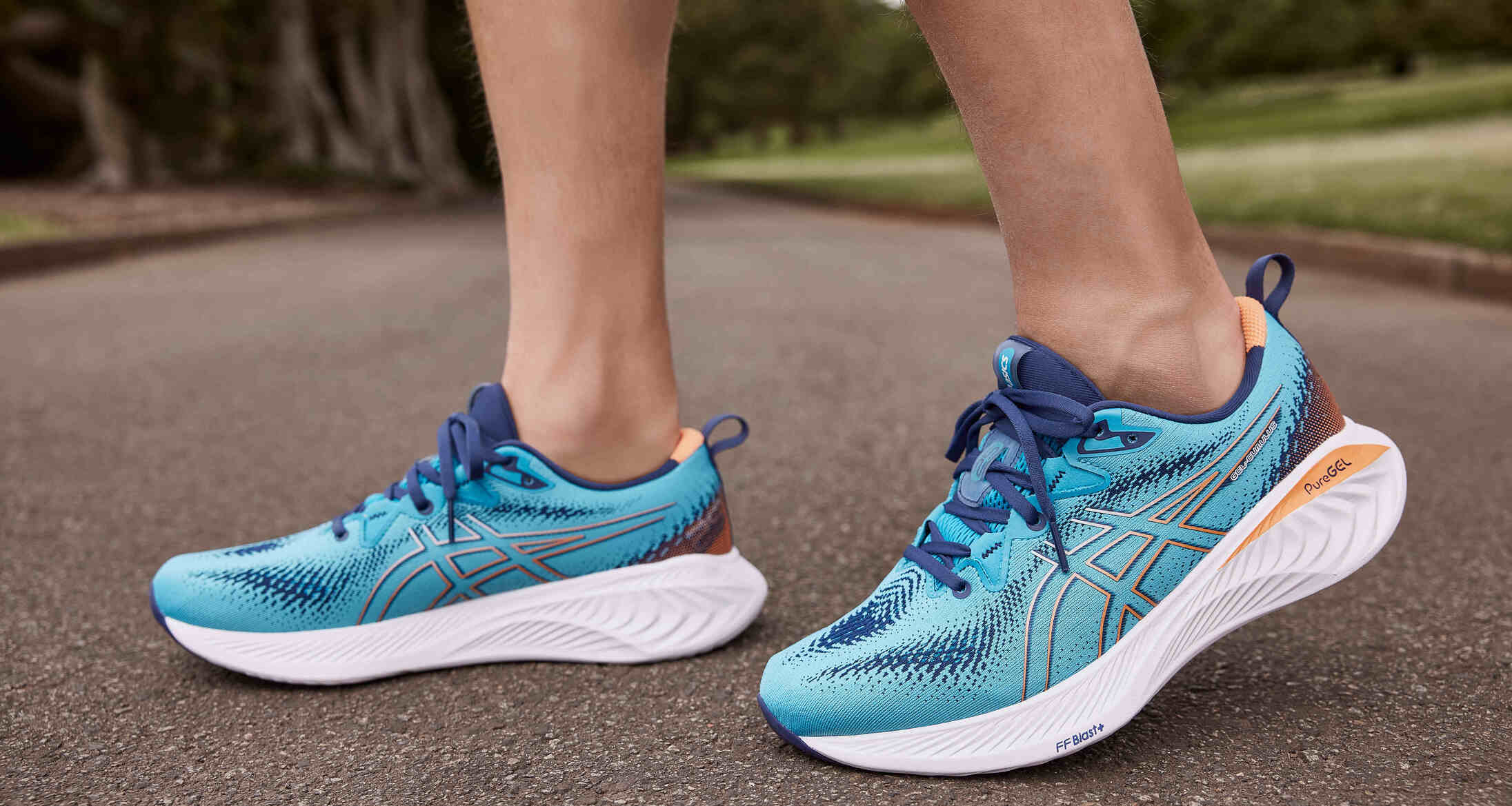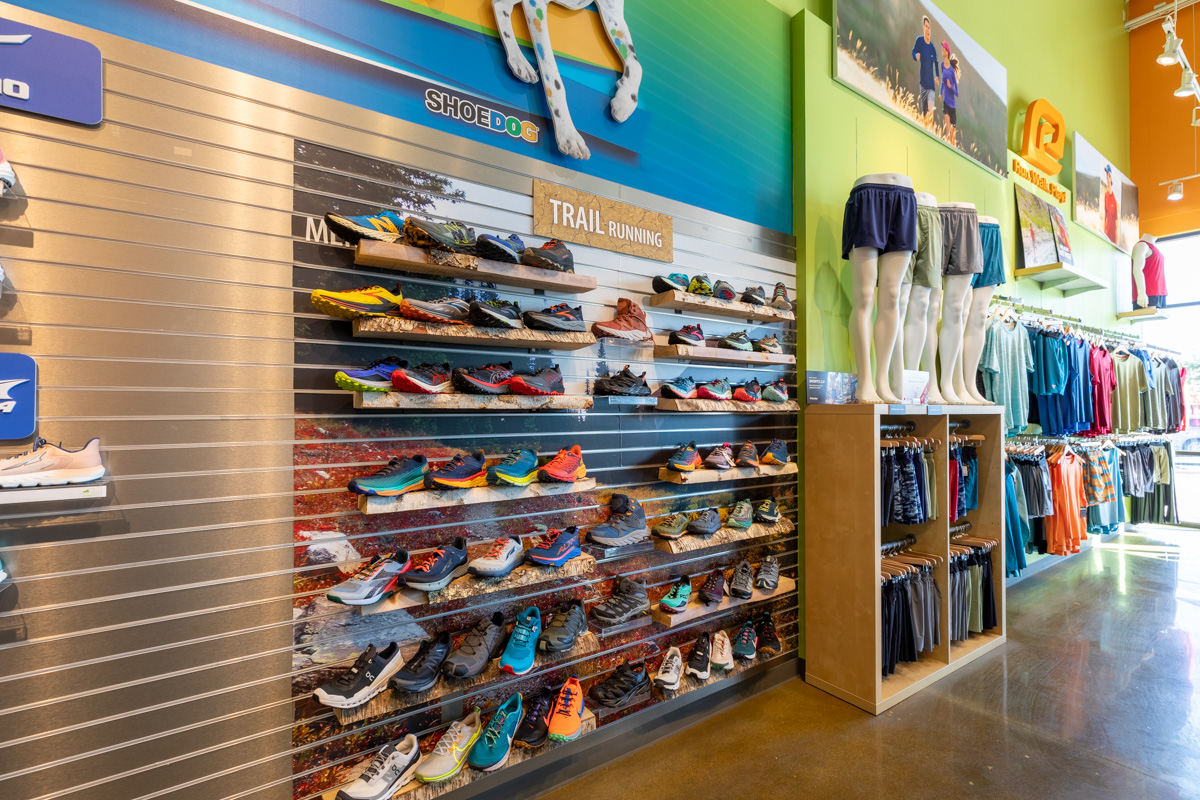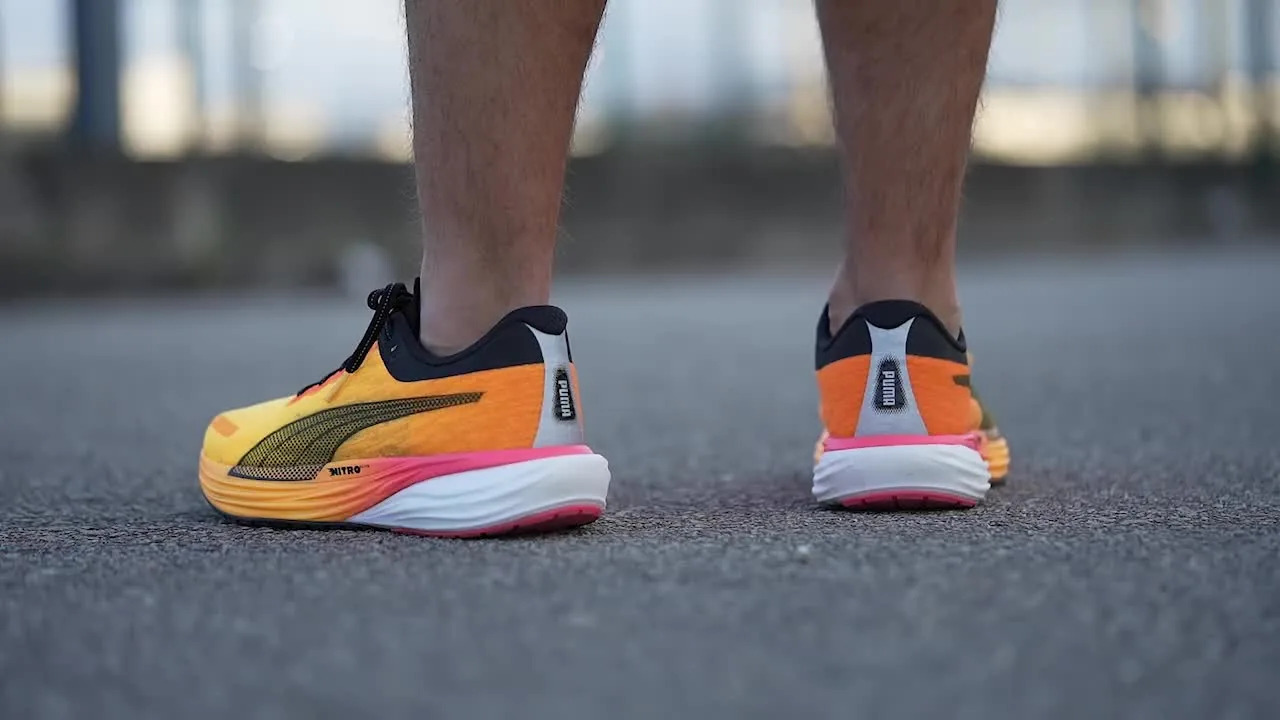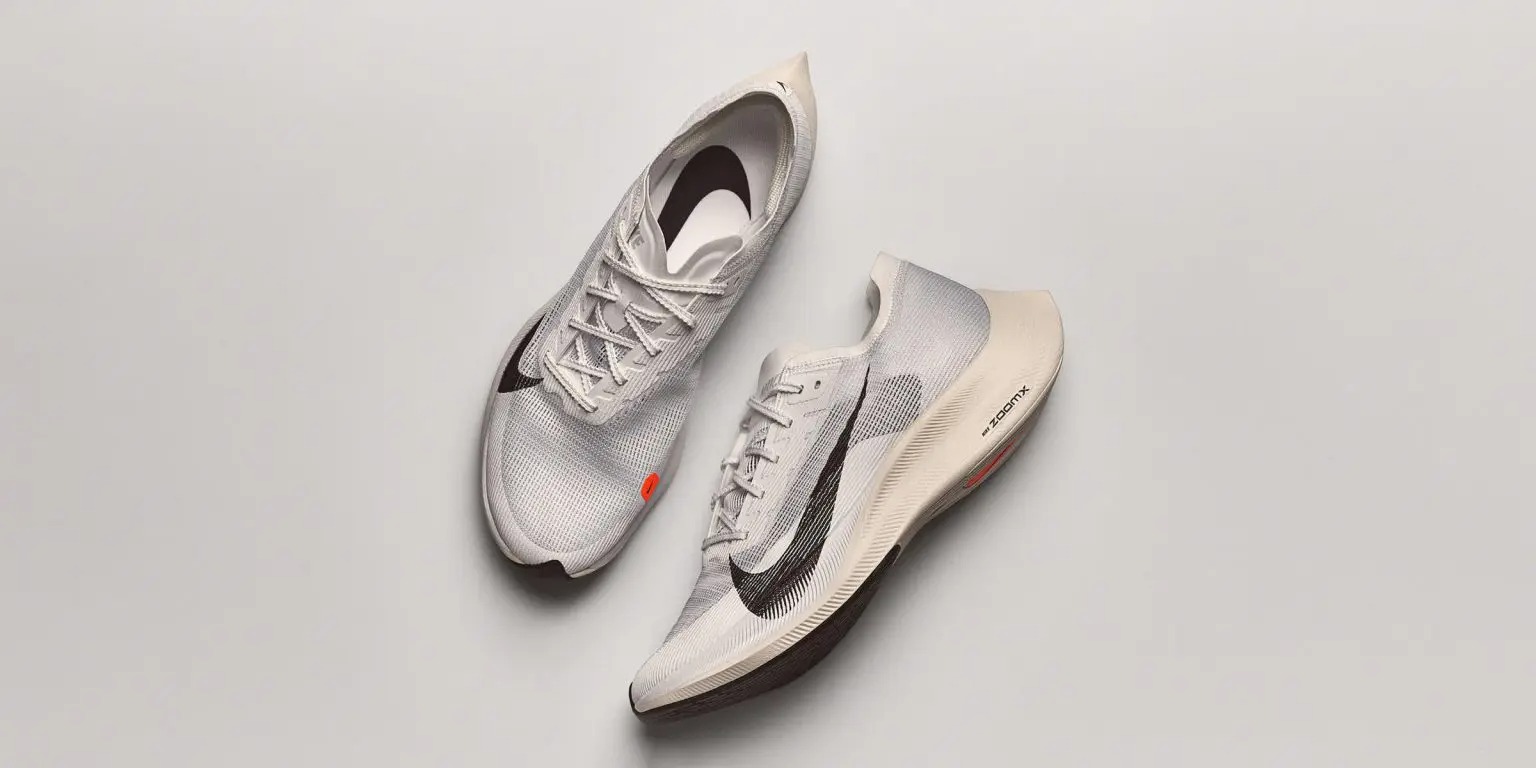Home>Misc>Brands>How Do On Running Shoes Fit Compared To Nike
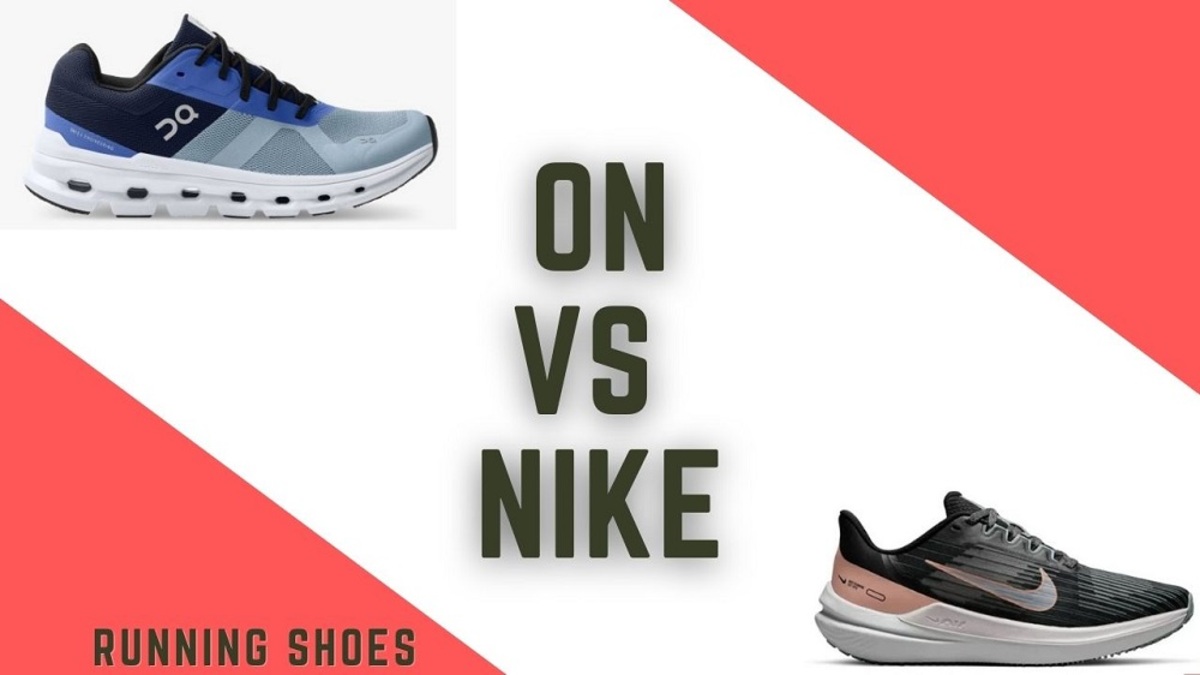

Brands
How Do On Running Shoes Fit Compared To Nike
Modified: January 22, 2024
Learn how On running shoes fit compared to Nike and discover which brand suits your feet best. Get insights on the comfort and sizing of both brands.
Introduction
Welcome to our comprehensive guide on the fit of On running shoes compared to Nike shoes. Finding the perfect fit is crucial when it comes to choosing the right pair of athletic shoes, as it directly affects both comfort and performance. Both On and Nike are renowned brands in the industry, known for their innovative designs and high-quality footwear. In this article, we will take a closer look at how On running shoes and Nike shoes differ in terms of fit.
Whether you’re a professional athlete or a casual runner, having a shoe that fits properly can make all the difference. Comfortable shoes not only prevent blisters and discomfort but also provide the necessary support and stability to minimize the risk of injuries. Understanding the differences in fit between On running shoes and Nike shoes can help you make an informed decision when purchasing your next pair.
We will examine the fit factors for both On running shoes and Nike shoes, explore the pros and cons of each brand, and help you determine which one may be the best fit for your running needs. So, let’s dive in and discover how On running shoes compare to Nike shoes when it comes to finding the perfect fit!
Understanding On Running Shoes
On running shoes are known for their unique technology and innovative design. Developed in Switzerland, these shoes are designed to provide a lightweight and responsive running experience. The key feature that sets On running shoes apart is their patented CloudTec cushioning system.
The CloudTec cushioning system consists of individual cloud-like pods on the outsole of the shoe. These pods compress upon impact to absorb shock and provide cushioning, and then quickly rebound to provide a responsive push-off. This technology aims to enhance the running experience by offering a smooth and comfortable ride.
Additionally, On running shoes are known for their precision engineering and attention to detail. The shoes are designed to have a snug fit, with a focus on supporting the natural movement of the foot. The upper of the shoe is typically made from breathable and flexible materials that conform to the shape of the foot, providing a secure and comfortable fit.
On running shoes are available in various models, each designed for different types of runners and running styles. Whether you’re a neutral runner, an overpronator, or someone who prefers a minimalist design, On has a shoe in their lineup to cater to your needs.
It’s important to note that while On running shoes offer a unique and comfortable fit, they may not be suitable for everyone. Some runners may find that the CloudTec cushioning is too soft or lacks the necessary support for their running style. However, many runners rave about the comfortable and responsive feel of On running shoes, making them a popular choice among avid runners and athletes.
Understanding Nike Shoes
Nike is a global leader in athletic footwear, known for its iconic designs and cutting-edge technology. Nike shoes are engineered to provide performance, durability, and comfort for athletes of all levels. From running to basketball, Nike offers a wide range of shoes designed for specific sports and activities.
One of the key features of Nike shoes is their emphasis on cushioning and stability. Nike utilizes various cushioning technologies such as Air Max, Zoom Air, and Lunarlon to provide a comfortable and responsive ride. These cushioning systems help absorb impact and provide optimal support for different types of movements.
In terms of fit, Nike shoes are designed to offer a combination of support and flexibility. The uppers of Nike shoes are typically made from breathable mesh or lightweight synthetic materials, allowing for proper ventilation and a snug fit. The fit of Nike shoes may vary depending on the specific model and the intended usage. Some Nike shoes have a more narrow or snug fit, while others have a wider or more roomy fit to accommodate different foot shapes.
Nike shoes also feature various lacing systems and adjustable straps to customize the fit according to individual preferences. This allows runners and athletes to find a comfortable and secure fit that suits their specific needs.
It’s important to note that Nike offers shoes for different types of pronation, including neutral, overpronation, and underpronation. This ensures that runners with different pronation patterns can find a shoe that provides the necessary support and stability for their feet.
Overall, Nike shoes are known for their versatile fit and performance-driven design. Whether you’re a professional athlete or a casual wearer, Nike offers a wide range of options to cater to different foot shapes and running styles.
Differences in Fit
When it comes to fit, both On running shoes and Nike shoes have their distinguishing characteristics. Understanding these differences can help you determine which brand may be a better fit for your running needs.
On running shoes are known for their snug and precise fit. The upper of On shoes is designed to wrap around the foot securely, providing a sock-like feel. This close fit helps to minimize slippage and allows for a more natural and efficient running stride. The snug fit of On shoes is particularly beneficial for those who prefer a locked-in sensation and a more responsive ride.
On the other hand, Nike shoes often have a more varied fit, catering to different foot shapes and running preferences. Nike offers a range of widths, including narrow, regular, and wide, to accommodate individuals with different width requirements. Additionally, Nike shoes may have different volume levels, providing options for those with higher or lower instep heights.
In terms of overall fit, Nike shoes tend to offer a bit more room in the toe box compared to On running shoes. This can be advantageous for individuals with wider feet or those who prefer a more relaxed fit. The extra room in the toe box allows for natural foot splay during the running motion, providing a comfortable and accommodating fit.
It’s important to note that both On running shoes and Nike shoes may have models that cater to specific foot types or running styles. Understanding your foot width, arch type, and pronation pattern can help you make a more informed decision when choosing between the two brands.
Ultimately, the best way to determine the right fit is to try on both On running shoes and Nike shoes and see how they feel on your feet. Your comfort and preference should be the deciding factors in selecting a shoe that meets your unique needs.
Fit Factors for On Running Shoes
When considering the fit of On running shoes, there are several key factors to take into account. These factors can help you determine whether On shoes will provide the desired comfort and support for your feet.
1. Snug Fit
On running shoes are known for their snug fit. The upper of On shoes is designed to wrap around the foot closely, providing a secure and supportive feel. This snug fit helps minimize slippage and ensures a more efficient and natural running motion.
2. Sock-Like Feel
The construction of On shoes aims to provide a comfortable and sock-like feel. The upper is often made from flexible materials that conform to the shape of the foot. This allows for a more personalized and comfortable fit, reducing the chance of irritation or discomfort during prolonged runs.
3. CloudTec Cushioning System
The CloudTec cushioning system in On shoes offers a unique and responsive feel. The individual cloud-like pods on the outsole absorb impact upon landing and provide energy return during toe-off. This cushioning system contributes to the overall comfort and responsiveness of On running shoes.
4. Precision Engineering
On running shoes are designed with precision engineering to support the natural movement of the foot. The placement and design of the pods and other features in the shoes are intended to provide targeted support and promote an efficient running gait.
5. Range of Models
On offers a range of running shoe models, each designed to cater to different types of runners and running styles. Whether you’re a neutral runner, an overpronator, or someone who prefers a minimalist design, On has a shoe that may provide the desired fit and support for your specific needs.
Keep in mind that personal preference plays a significant role in determining the right fit for you. Trying on different models and sizes of On running shoes, and considering your foot shape, arch type, and pronation pattern, can help you find the perfect fit and maximize your running performance.
Fit Factors for Nike Shoes
When evaluating the fit of Nike shoes, there are several important factors to consider. These factors can help you determine whether Nike shoes will provide the desired level of comfort and support for your feet.
1. Customizable Fit
Nike shoes are known for their ability to provide a customizable fit. Many Nike models feature adjustable lacing systems and straps, allowing you to customize the fit according to the shape and preferences of your feet. This feature ensures a secure and personalized fit for optimal performance.
2. Variations in Width and Volume
Nike offers shoes in a range of widths, including narrow, regular, and wide, to accommodate different foot shapes. Additionally, some Nike models provide variations in volume, catering to individuals with higher or lower instep heights. These options ensure that you can find a Nike shoe that fits snugly and comfortably, minimizing any potential discomfort or slippage.
3. Cushioning and Stability
Nike shoes are engineered to provide exceptional cushioning and stability. Nike utilizes various cushioning technologies, such as Air Max, Zoom Air, and Lunarlon, to ensure a comfortable and responsive ride. These cushioning systems help absorb impact and provide optimal support for different types of movements, enhancing the overall comfort and performance of the shoe.
4. Different Foot Types
Nike offers shoes designed for different pronation patterns, including neutral, overpronation, and underpronation. This ensures that individuals with different foot types can find a shoe that provides the necessary support and stability for their feet. Understanding your foot type and pronation pattern can help you choose the most suitable Nike shoe for your running needs.
5. Versatile Fit
Nike shoes are designed to accommodate a variety of foot shapes and running preferences. The uppers of Nike shoes are typically made from breathable mesh or lightweight synthetic materials, allowing for proper ventilation. This flexible design ensures a comfortable fit that accommodates natural foot movements during running.
Ultimately, finding the right fit in a Nike shoe involves trying on different models and assessing how they feel on your feet. Considering factors such as foot width, arch type, pronation pattern, and personal preference can help you select a Nike shoe that offers the desired fit and performance for your running endeavors.
Pros and Cons of On Running Shoes
On running shoes offer several benefits that make them a popular choice among runners. However, they also have some potential drawbacks that should be considered when making a purchasing decision.
Pros:
- 1. Snug fit: On running shoes are known for their snug fit, providing a secure and supportive feel during runs.
- 2. CloudTec cushioning system: The unique CloudTec cushioning system in On shoes offers a comfortable and responsive ride, absorbing impact and providing energy return.
- 3. Precision engineering: On shoes are precision-engineered to support the natural movement of the foot, promoting an efficient gait and reducing the risk of injuries.
- 4. Versatile range: On offers a variety of shoe models designed for different types of runners and running styles, ensuring there is an option for every runner’s needs.
- 5. Lightweight: On running shoes are known for their lightweight construction, providing a nimble feel that enhances speed and agility.
Cons:
- 1. Limited cushioning options: While the CloudTec cushioning system is praised for its responsiveness, some runners may find it lacking in terms of cushioning and support, especially for longer distances or intense training sessions.
- 2. Narrow toe box: The snug fit of On shoes may result in a narrower toe box, which can be uncomfortable for runners with wider feet or those who prefer more toe splay during their runs.
- 3. Price: On running shoes are often positioned in the higher price range, which may be a deterrent for budget-conscious runners.
- 4. Limited availability: On running shoes may not be as widely available as other major running shoe brands, making it more challenging to find and try on a pair before making a purchase.
It is important to carefully consider these pros and cons and weigh them against your specific running needs and preferences. Trying on different models of On running shoes and seeking advice from professionals can help you determine if On shoes are the right fit for your running journey.
Pros and Cons of Nike Shoes
Nike shoes have long been a favorite among athletes and fitness enthusiasts. They offer a range of benefits, but it is important to be aware of their potential drawbacks when considering them for your running needs.
Pros:
- 1. Customizable fit: Nike shoes often feature adjustable lacing systems and straps, allowing for a personalized and secure fit.
- 2. Wide range of widths: Nike offers shoes in different widths, including narrow, regular, and wide, accommodating various foot shapes and sizes.
- 3. Cushioning technology: Nike utilizes various cushioning technologies such as Air Max, Zoom Air, and Lunarlon, providing exceptional comfort and impact absorption for a smooth running experience.
- 4. Stability features: Many Nike shoe models incorporate stability features, such as medial posts or arch support, to cater to different pronation patterns and provide adequate support.
- 5. Versatile designs: Nike offers a wide range of shoe designs, making them suitable for various sports and activities, from running to basketball or cross-training.
Cons:
- 1. Sizing variations: Nike shoes may have inconsistencies in sizing, meaning that some models may run larger or smaller than others, requiring careful attention when selecting the right size.
- 2. Durability concerns: Depending on the specific model, some Nike shoes may exhibit faster wear and tear, particularly in high-wear areas like the outsole or midsole foam.
- 3. Limited arch support options: While Nike offers stability features in some models, they may not have as extensive a selection of shoes specifically designed for individuals with specific arch types.
- 4. Price range: Nike shoes often have a higher price range, which may be a consideration for budget-conscious buyers.
It is essential to consider these pros and cons, along with your personal preferences and running style, when deciding on Nike shoes. Trying on different models and seeking advice from experts can help you find the Nike shoe that best suits your needs and maximizes your running performance.
Conclusion
Choosing the right pair of running shoes is crucial for optimal comfort, support, and performance. When comparing On running shoes and Nike shoes in terms of fit, it is evident that both brands offer unique features and benefits.
On running shoes are known for their snug fit, sock-like feel, and the innovative CloudTec cushioning system. They provide a precise and responsive ride, catering to runners who prefer a locked-in sensation and a lightweight design.
On the other hand, Nike shoes offer a customizable fit, wider range of widths, and various cushioning technologies. They accommodate a broader spectrum of foot shapes and have models suited for different types of pronation.
While On running shoes excel in their snug fit and precise engineering, some may find them lacking in terms of cushioning options or a more spacious toe box. On the other hand, Nike shoes have a versatile fit, but may exhibit variations in sizing and durability.
Ultimately, the best choice between On running shoes and Nike shoes depends on your individual preferences, foot shape, and running style. It is highly recommended to try on different models of both brands, seeking professional advice if needed, to determine which provides the desired fit and performance for your running needs.
Remember, finding the perfect fit is a critical aspect of selecting running shoes. Prioritize comfort, support, and the ability to enhance your running experience with every stride. Whichever brand you choose, investing in well-fitting running shoes will undoubtedly contribute to a more enjoyable and successful running journey.
